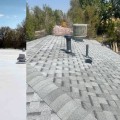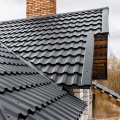Walking or working on a flat roof can be dangerous due to the risk of falling and the potential for injury. The strength of the roof is a major factor in determining its safety, as is the height of the roof. Even a fall from a single-story flat roof can cause serious injury or worse. For larger flat roofs, such as those found in apartment buildings, safety precautions such as short walls or fences are usually taken.
For smaller flat roofs, such as those found in residential properties, these safety precautions are unlikely to be taken. Therefore, the risk of falling off the roof is greater if you are not careful. Additionally, there is a risk of damaging the roof itself or other things up there. It is best to leave any inspection or repair that requires access to the roof to professionals.
Although flat roofs are less precarious than sloped roofs, there is still a risk of damaging the felt and puncturing the membrane. A commercial flat roof can be used for recreational purposes or to create additional storage space, but it must be built to withstand foot traffic and the added weight of any equipment you bring. If personal safety isn't a top priority, consider the damage you can cause to your roof just by walking on it. The subfloor and roof structure may creak and crack, shingles can get scratched and lose their protective granules, and metal roofs can dent.
All of this can lead to leaks over time. The safest roof for walking is a flat roof, but you have to be careful not to damage the roof with the legs of chairs. A common way to avoid this problem is to place carpet in a place where anything can scratch the ceiling surface. This will prevent chairs from tearing or tearing the flat roof material.
Additionally, walking pads in roof areas with a lot of foot traffic will help mitigate potential damage and create a safe, non-slip surface for anyone walking on the roof. First things first: avoid having to walk or climb the roof if possible. Whether your roof is made of clay shingles, concrete, a composite material, or you have a commercial flat roof, the more you can keep foot traffic away from your roof, the better off you'll be. Pedestrian traffic puts a lot of pressure on the roof which can cause cracks, weakened materials, movement, and other problems that can result in further damage to the roof, especially during the next major rain.
EPDM rubber and other types of commercial roofs are designed to withstand small amounts of foot traffic without problems. If you need to walk on a flat roof, avoid boots with studs or solid soles and avoid putting too much pressure in one place. Keep the weight extended as much as possible to avoid serious indentations. It's also recommended that you create a check-and-out system and provide outside contractors with a companion to familiarize them with the flat roof before they start working on it.
If the roof membrane is not strong enough to withstand the additional weight of foot traffic, it can easily sag, posing a danger to the person walking on it and causing costly damage to the roof.



